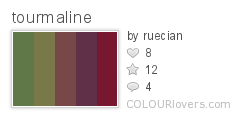October’s stones are both characterized by flexibility or change. The traditional and modern stone for October is the seemingly fickle Opal, and the alternative is the long, slender Tourmaline. Both the Opal and Tourmaline come in a variety of colors, Opal spanning the spectrum.
 |
The word opal comes from the Latin opalus, by Greek òpalliòs, and is from the same root as Sanskrit upálá[s] for “stone.” Opal ranges from clear through white, gray, red, yellow, green, shore, blue, magenta, brown, and black. Of these hues, red and black are the most rare, whereas white and green are the most common. Opal is the national stone of Australia, with some of the most precious existing there. Opals are iridescent, giving way to an even broader surface colour range. |
The varieties of Opal are common (milk opal, milky bluish to greenish (which can sometimes be of gemstone quality), honey-yellow with a resinous lustre, brown, grey, or a colorless glass-clear opal sometimes called Muller’s Glass), precious (characterized by tight speherical structure), Fire Opal (or Girasol, is a translucent to semi-opaque stone that is generally yellow to bright orange and sometimes nearly red and displays pleochroism at certain angles), Peruvian Opal (also called blue opal) is a semi-opaque to opaque blue-green stone found in Peru which is often cut to include the matrix in the more opaque stones. Peruvian Opal does not display pleochroism (an optical phenomenon in which stones appear to be different colors when observed at different angles).
 |
Tourmaline is one of the most chemically complicated silicate minerals. Its crystals are characterized by long, cylindrical to thick prismatic and columnar. Like Opal, Tourmaline has a wide variety of colors. Usually, iron-rich tourmalines are black to bluish-black to deep brown, while magnesium-rich varieties are brown to yellow, and lithium-rich tourmalines are practically any color: blue, green, red, yellow, pink, and so on. Rarely, it can be colorless. |
Bi-colored and multicolored crystals are relatively common. It is possible for one to be green at one end and pink at the other, or green on the outside and pink inside: this type is called watermelon tourmaline. Some forms of tourmaline are dichroic, in that they appear to change color when viewed from different directions.

